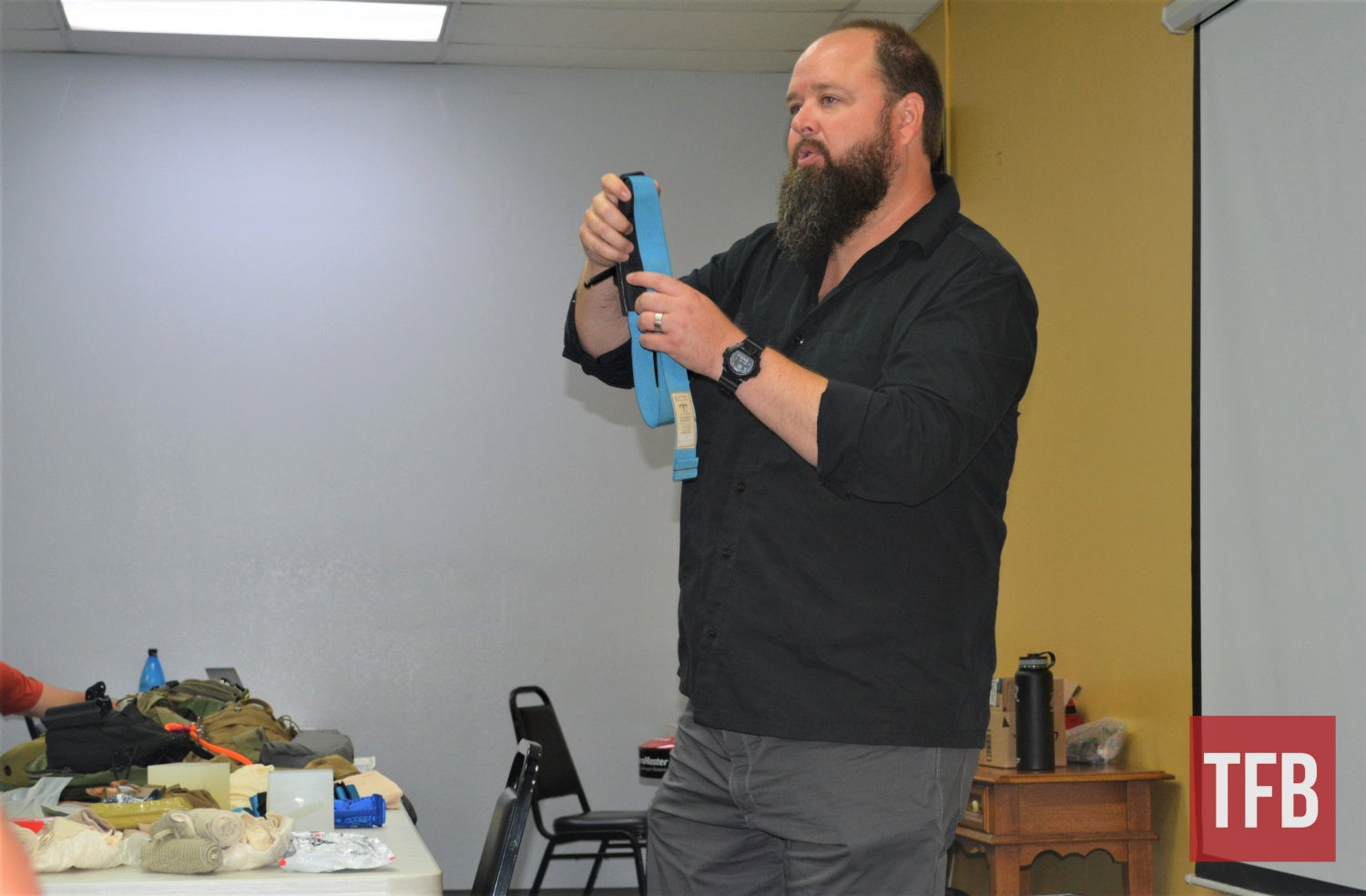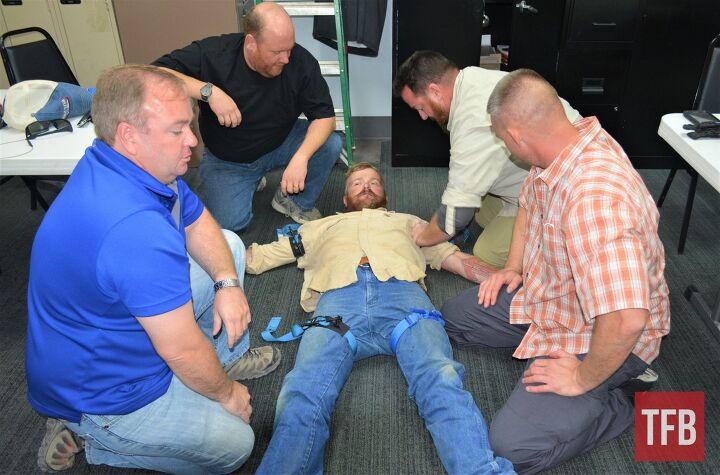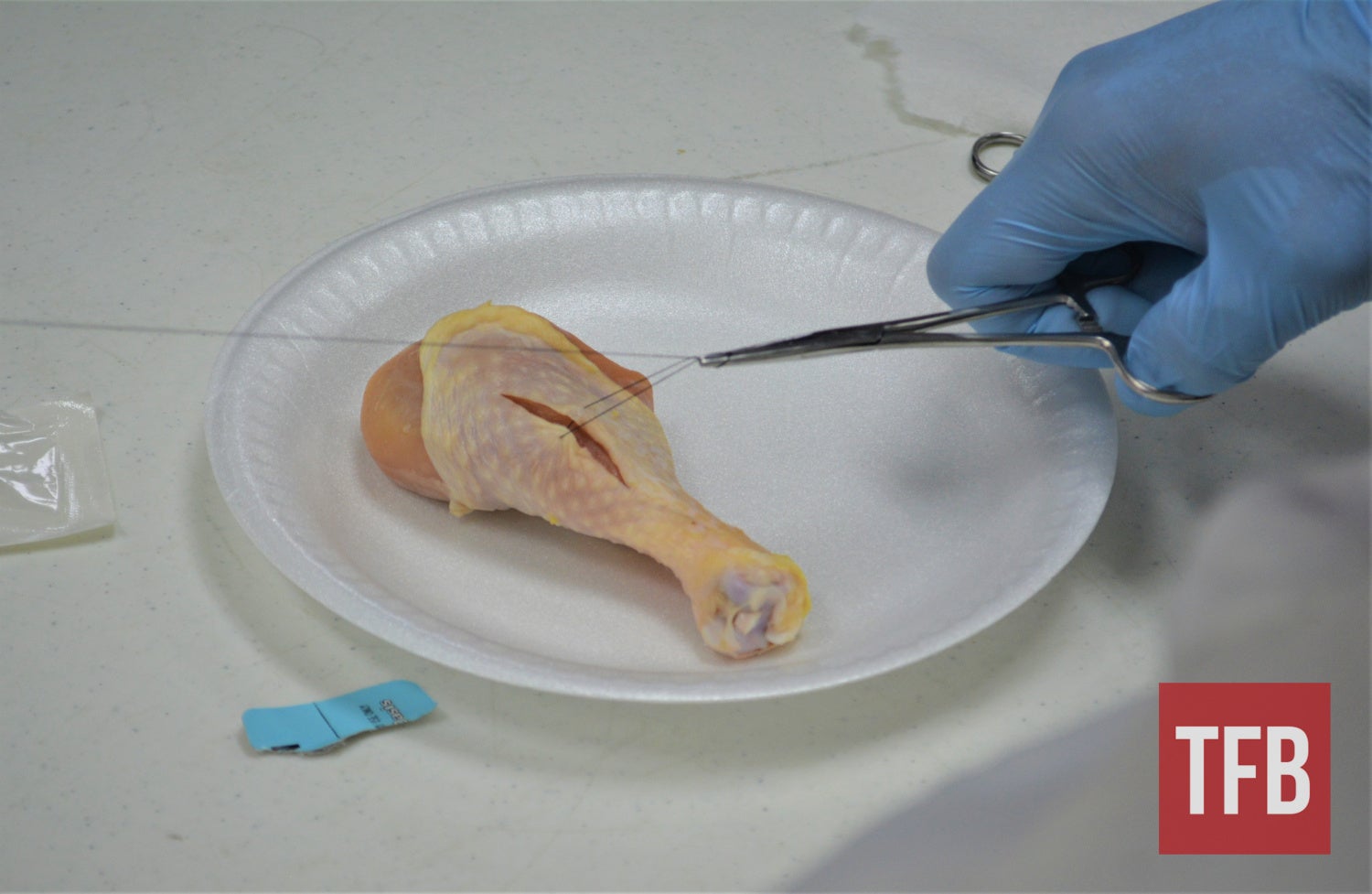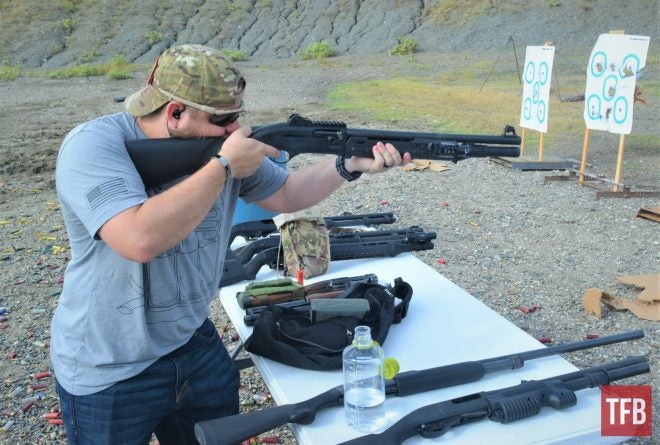If you discuss home defense scenarios with fellow firearms owners, you will almost certainly get a wide variety of ideas and responses. People’s chosen defensive firearms, planning, and training will vary significantly based on their individual backgrounds and a host of other variables. In my particular circle, AR-15s and modern semi-automatic handguns tend to be the go-tos, far more than a trusty old shotgun. This is also the case for me; given my specific training and experience, I am most proficient, comfortable, and well-schooled with these types of guns. My most readily-accessible “bump in the night” firearm for a potential “Alamo” situation in my house is a suppressed, short-barrelled AR pistol with a high-quality weaponlight and optic. Where I live, it normally wouldn’t take long at all for an ambulance and law enforcement to come help me and my family in the event of a violent encounter like a home invasion. However, “normally” is the operative word – and we all know that the last couple of years have been anything but normal.
Shotgun news @ TFB:
- Combat Shotgun Basics with Clint Smith of Thunder Ranch
- VIDEO: A $500 Semi-Auto Tactical Shotgun Build
- How to Set Up Your Defensive Shotgun
- Beretta 1301 Shotgun Extended Review

Training day 1 was on the range, all about using a shotgun in a defensive role.
At this juncture, it’s old news: reactions to the pandemic, civil unrest, socio-political tensions, rising prices and decreasing supply for ammo and many other goods – things have gotten a bit hairy from time to time through much of 2020 and 2021. Two of the training industry’s premier professionals put their heads together and came up with a new joint training course intended to address some of the unusual challenges that some people have faced in the last two years, or may have to in the future. Caleb Causey of Lone Star Medics and Greg Ellifritz of Active Response Training are the primary instructors for their respective organizations. Both are highly accomplished in multiple key areas of defensive-related training, and over the last two years, they often discussed how best to address some of the atypical conditions they and some of their students have faced in our changing times. A common theme in their conversations tended to center around questions like, “What if someone didn’t have the option of defending their home with a rifle or handgun, and a shotgun (or at least shotgun ammo) was all they could get their hands on? What if the same pressures that limited their guns and ammo options could also limit their access to medical help, and they couldn’t simply call 911 or get to a hospital in an emergency? Could they protect their families from angry mobs just using some shells on hand, and patch themselves up to last more than a matter of minutes or hours if they had to hunker down in an Alamo-esque situation?”

Active Response Training is led by Greg Ellifritz, a veteran instructor with decades of teaching and law enforcement experience.
As the name implies, LSM focuses chiefly on prehospital medical intervention, equipping students with the knowledge and skills to handle urgent health/safety risks, thus hopefully buying enough time to get a critical patient to a higher level of care such as an ER. Causey also has a substantial background in shooting and firearms training, and many of his classes incorporate both medical and firearms elements given the logical links involved. Ellifritz is the inverse; his decades of experience as a tactical/shooting instructor, law enforcement officer and police trainer, and unarmed/impact weapons/bladed weapons instructor make him a guru on virtually all things defensive, including with a shotgun. His impressive CV also spans a considerable amount of medical experience and expertise.

Ellifritz overseeing his students blasting away with their scatterguns during a group drill.
These two trainers’ complementary areas of expertise, each possessing the other’s opposite primary and secondary competencies, provide an augmenting effect when they teach in tandem. Causey takes the lead for medical with Ellifritz well capable of supporting, and Greg spearheads the fighting side with Caleb highly qualified to assist regarding those competencies. Out of these combined backgrounds and the kinds of questions I mentioned above, their new joint “Operation: Alamo” class was born. I was fortunate to be able to attend the first “Alamo” class, held October 2nd-3rd in the DFW area of Texas. Training Day 1 was all about the combat shotgun, and took place at ETTS gun range just south of Dallas. Day 2, hosted by Defensive Solutions of Texas in Fort Worth, focused on the sort of medicine that a layperson could utilize at home to deal with issues that might otherwise warrant a visit to an urgent care facility or other medical professional if no such care was accessible.

We also ran some timed drills with one-on-one guidance.
I’m a huge proponent of good firearms training (and good training in other skillsets as well). Other than standard safety rules, one of the biggest things I always try to impart to newer shooters/gun owners is that simply having guns isn’t enough. You need to be familiar and proficient in their safe and effective use, and this takes instruction from a competent, qualified, vetted teacher. While I’ve taken numerous courses in other areas, the fighting shotgun was not a shooting discipline I’d pursued prior to the “Operation: Alamo” class. My scattergun experience was limited to sportsman’s pursuits like dove hunting and skeet/trap, but I knew combat shotgun training would also be valuable, so I jumped at the chance to learn from an expert like Ellifritz. The range day certainly did not disappoint. The curriculum was intelligently designed and skillfully delivered, built to maximize the learning opportunities from a lower round count (under 150), giving consideration to the current ammo price/supply issues. My classmates brought a spectrum of shotgun options, from classic 870 and 590 variants, to some Benelli semi-autos, to the vaunted Beretta 1301s which many experts consider to be today’s top option for a fighting shotgun. I ran a decidedly un-tactical long-barrelled 870 Wingmaster 12-gauge pump, knowing that it’s far better suited for bird hunting than a combat role.

Lone Star Medics’ Director of Training, Caleb Causey, worked as an Army medic, a civilian EMT, a SWAT team medic, and more before fully dedicating himself to teaching starting in 2009.
Thankfully, my old dove gun held up better than I’d expected. Although for certain tasks like room clearing, its length would definitely be sub-optimal, it wasn’t at all unmanageable. The old hunting shotgun ran like a champ and I was pleasantly surprised at the competitive times I managed to extract from it when Ellifritz brought out the timer. We learned about the hows and whys of recoil management, primarily employing the “push-pull” method popularized by Rob Haught, safety manipulations, and different ready positions. We also worked on ammo management (a common point of difficulty and delay for neophyte shotgunners) including standard and combat loading, plus effective usage of ammo storage equipment like side saddles. Small tweaks in technique (plus plenty of practice, of course) can make a real difference in shotgun loading efficiency. To finish, we got some exposure to additional skills such as shooting one-handed, off-handed, the old-school underarm assault position, and the classic “Rolling Thunder” drill.

Tourniquet practice during Causey’s portion of training day 2.
One of the best things the class did was help dispel the myth that a fighting-role shotgun doesn’t require much practice or aiming. I’ve heard uneducated shooters make these claims for years, but they are patently false. Good shotgun fighting takes just as much competence, if not maybe moreso, than battle rifles or handguns. Greg asserts that the most important skill you can develop with a defensive shotgun is the ability to achieve consistent, fast, solid first-round hits. While this seems intuitive, bear in mind that statistics overwhelmingly show that missed shots in defensive altercations tend to be the rule rather than the exception, and many of these shootings involve rounds that tend to be easier to control than the relative high recoil impulse common with shotguns. Suffice it to say, even with a bit more forgiveness inherent in a patterned shot versus a single bullet, getting those rapid hits may not be as easy as many people think.

The hands-on introduction to suturing was fun, but demonstrated that stitches are typically better left to the pros, and the rest of us would usually be better off sticking to less invasive wound management techniques like steri strips.
The medical component of the class was also exceedingly valuable. Training day two was held in a classroom and taught jointly by Ellifritz and Caleb Causey. We hit a concise overview of some trauma response fundamentals – things like patient assessment, how and when to apply tourniquets or chest seals, and medkit best practices. While immediate emergency medical responses tend to be similar whether or not a higher echelon of care (i.e. ambulance/hospital) is readily available, potential separation from additional medical resources will dictate what you do in the aftermath, once you get the bleeding stopped. Those of you who enjoy backcountry outdoor activities may have been faced with this. How you handle a major injury in the suburbs with a 24-hour urgent care clinic minutes away is not the same as if you’re hours away from civilization. In the context of the class’ concept, Ellifritz focused on how we might approach tasks like wound care and closure if circumstances prevented even local travel, or societal breakdowns had caused medical facilities/personnel to be inaccessible. We covered wound cleaning, learning skills like proper irrigation. We also discussed the pros and cons of different wound closures, including steri strips, glue, staples, and stitches. Greg and Caleb taught basic suturing, and we got to practice with chicken thighs. This was an enjoyable and interesting exercise. Probably the most important lesson it taught is that although the idea of being able to DIY sutures may sound great, in practice you’re more likely to find that another method such as butterfly bandages will usually serve you better. The hands-on practice our teachers provided demonstrated these lessons excellently.

A classmate decided to photograph me being a photographer, as I worked to document our shotgun training day.
This “Alamo” class was only my most recent of many undertaken with Lone Star Medics, but my first with Active Response Training. It served to reinforce what I already knew from prior experience with Causey and his staff: that medical training is critically important and the LSM team is peerless in delivering it. Before this course, I’d only known Ellifritz and his offerings by reputation, and that reputation had been absolutely top-shelf. My experience as an ART student absolutely confirmed that this prestige is well-earned, and I will unquestionably seek additional opportunities to learn from Greg again in the future. I highly recommend both Lone Star Medics and Active Response Training to any of you out there. Whether you share my interest in the defensive shotgun component of their joint “Alamo” course, both outfits will certainly have something from which you can learn and benefit. The investment of my time and resources into this class was well worth it, and I’m confident this will be your experience as well. Go get some training, stay hydrated, and stay safe! See you at the range.
 Your Privacy Choices
Your Privacy Choices
